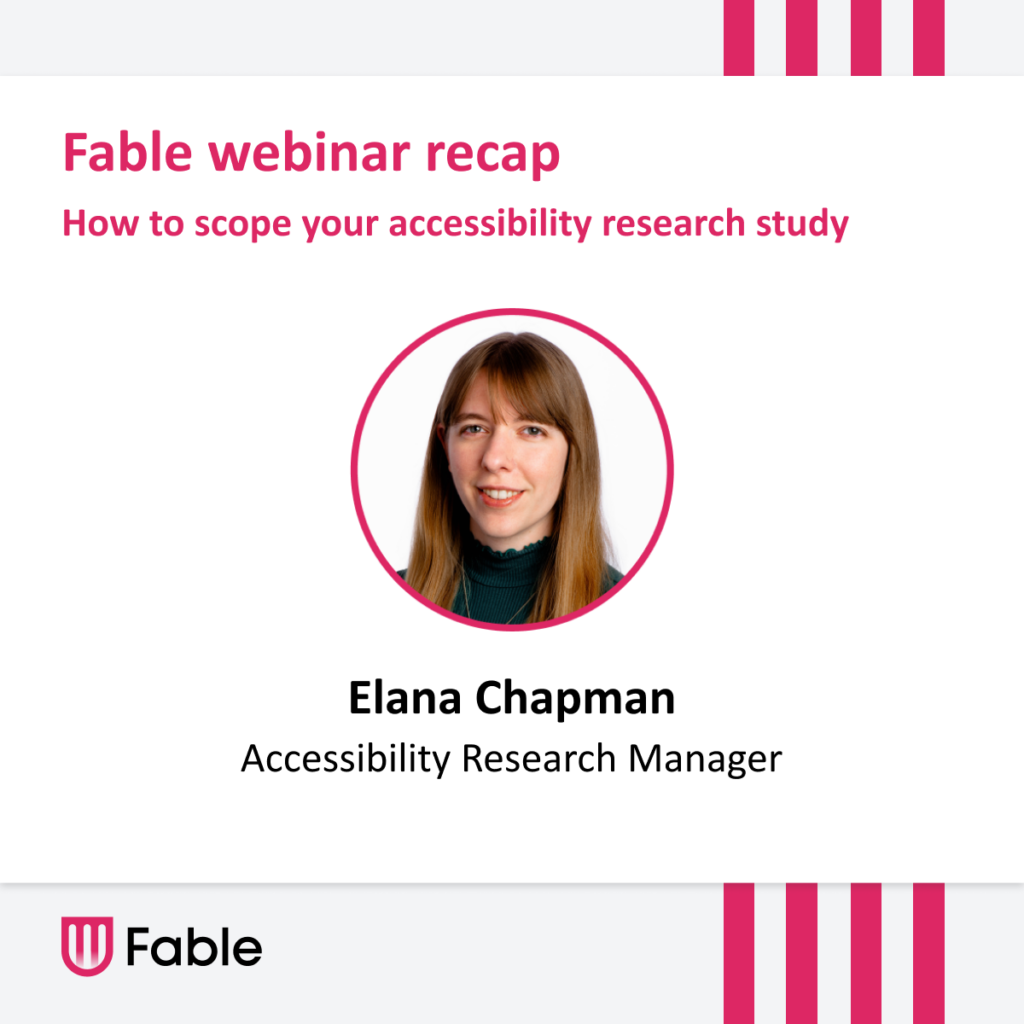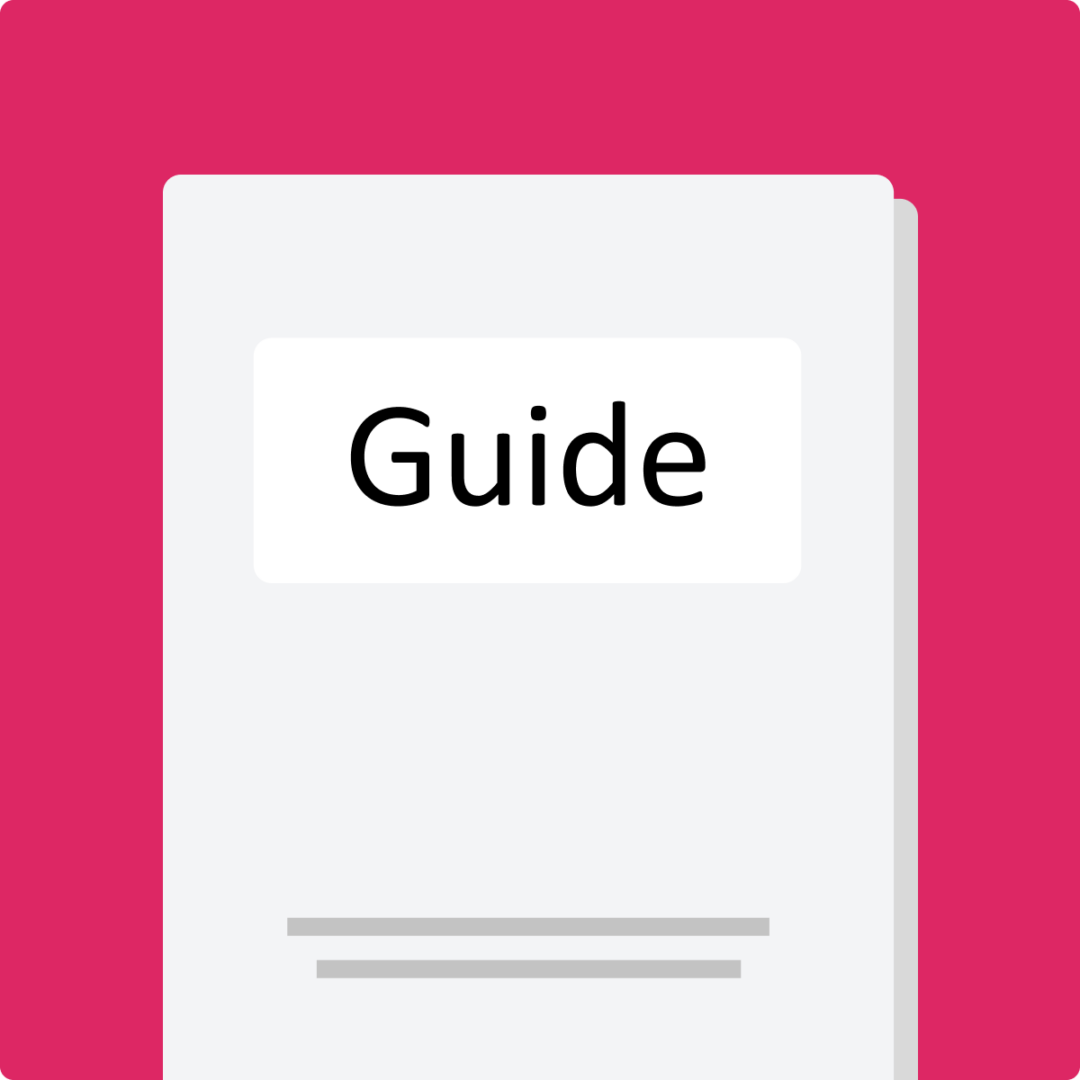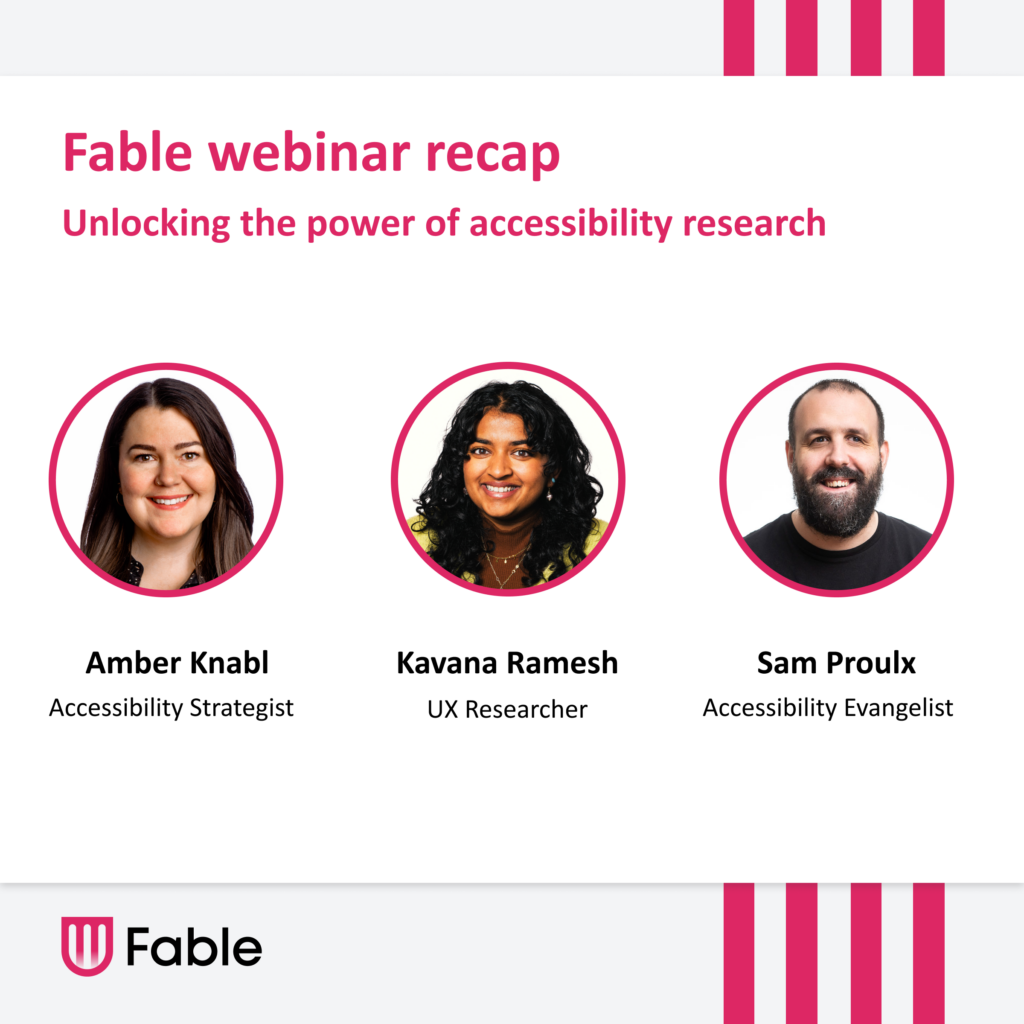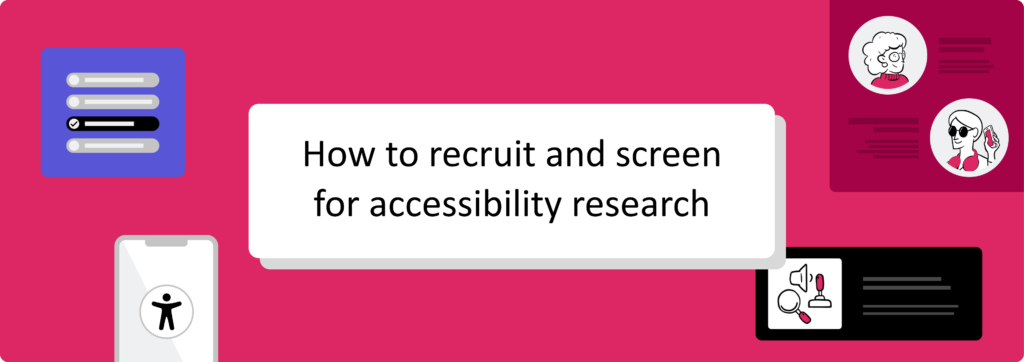
How to recruit and screen for accessibility research
If you’ve ever taken part in user research, you’ll know that a lot of work goes into recruitment. Getting the right information and insights has a lot to do with who participates in the study in the first place. When it comes to accessibility research, screening who will participate in your study using rigid and specific criteria may have unintended negative effects. In this article, we’ll cover a background on what screeners are, the impact they have on accessibility research and how to make sure you are setting yourself up to collect diverse and inclusive insights.
Why researchers use screeners
To see if participants would be a good fit for a study, researchers will typically leverage a screener. A screener is a list of questions that potential participants will answer before taking part in a research study. These questions usually have ‘yes’ or ‘no’ answers, or multiple-choice options, which will qualify, or disqualify, them from being a good fit for participation in a particular research study. Other questions typically will focus on demographics, habits, lifestyle, and what products they use. In many cases, this helps to ensure that your research data is relevant to the problem you’re trying to solve.
How traditional screeners are built
Screeners can feel important to target the right audience for your study, but they can also be a barrier to people with disabilities. Because of this, it’s possible that screeners don’t truly help you reach the participants who would lead you to the most valuable insights. Screeners often exclude people with disabilities — even if that’s not their intention.
For example, let’s say a company with a travel booking app is looking to run a research study. They want to understand how people use their app to book travel for different kinds of work. Some common screener questions could include:
- What is your age?
- What industry do you currently work in?
- What is your work role?
- How familiar are you with this app?
- How often do you use this app to book travel for work?
These questions would give researchers a good idea about how people use the app for business. It would also give them basic demographic and industry information to compare. That said, it would also likely disqualify people with disabilities due to factors outside of their control.
How screeners can exclude people with disabilities
When thinking about the screener questions above, how do we make sure we are not excluding participants with disabilities? To some, the easy way would appear to be adding a question about living with a disability to the screener. But adding this type of question makes a few assumptions.
First, there is an initial assumption that a person with a disability can use the app you are seeking feedback on. It also assumes that the platform or service you use to recruit and screen users is accessible. If either are inaccessible, reaching users with disabilities will be difficult.
Second, we must consider how realistic product familiarity may be. If a person with a disability must use a product with poor accessibility, they might use it very little or not at all. As a result, they may not be a frequent user. They may also rely on family members or support workers to help them use the product. This makes responding to questions about frequency and familiarity more complicated.
This also applies to asking employment related questions. Finding current users in highly specialized fields or roles might be difficult, but not due to lack of interest. Many industries and roles have had, and continue to have, barriers to entry. Fields without good representation of people with disabilities might not have accessible tools. A person with a disability might not reach the point of using the product if they haven’t been able to work in the field.
Lastly, another important consideration is that collecting personal information about a person’s disabilities and where they live may be a breach of privacy depending on where they live. Not to mention, many people may prefer not to disclose if they have a disability for a variety of reasons.
Recruiting the right participants with minimal screening
So, to reach users with disabilities, what can you do? First, it’s important to test your product to see how accessible it is today. Fable’s community of assistive technology users are uniquely qualified to provide high quality and rapid feedback. Testers at Fable use assistive technology in their daily lives, in addition to testing digital products. This is an effective way to receive feedback on how accessible and usable your product experience is, before you attempt more specific research.
Companies like Slack, Figma and Shopify have been able to collect accessibility insights and drive innovation, without relying on rigid qualifiers and traditional screening methods.
Even with minimal screening, inclusive research can teach us a lot about a product’s accessibility. Testing with users with disabilities is not only a window into how people use your product today. It’s also a window into how they should be able to use your product. What is most important about accessibility research is uncovering what users can do (or not do) with your product. How you can improve the current experience for customers with disabilities, and how you can capture new audiences with future improvements.
Reaching niche audiences with Fable Engage
If you do find that you need to narrow down who you’re collecting feedback from, Fable can help you reach the right audience in a way that remains inclusive. You can work with Fable’s team to scope out a niche audience that’s unique to your product, service, and research goals. From there, you can easily connect with this audience when conducting moderated or unmoderated research using Fable Engage.
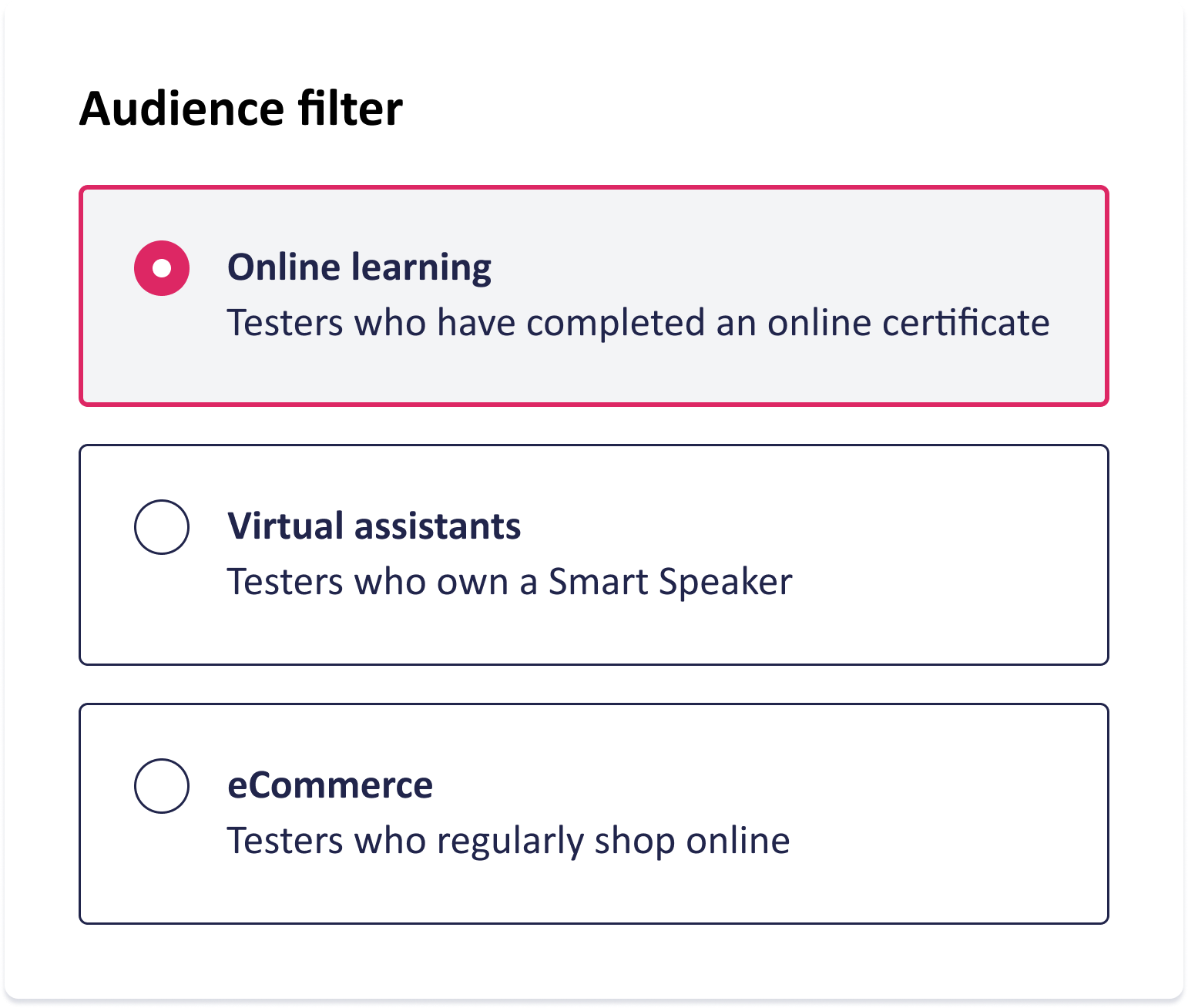

Thinking outside the screener box
It’s important to include people with disabilities as part of any research, whether generative or evaluative. Users with disabilities shop, apply for jobs, bank, and create content. They need to do the same things that non-disabled people do with digital products.
To make products better for everyone, we have to do research with everyone. This means we have to think differently about who we want to recruit and how we engage with them. This includes being intentional around how your screeners, compensation strategies, facilitation methods and other factors that might exclude the people you most want to reach. By considering who could and should use your product, you’ll be making your product more inclusive to all.

